Pierrot le fou: The StudioCanal Collection
Jean-Luc Godard's career has several distinct periods, coinciding with events in his life and around the world. The first spans 1960 to 1965, beginning with À bout de souffle (1960) and ending with Alphaville (1965), with Pierrot le fou (1965) practically a summary of the themes and styles of the films that preceded it and a sign of things to come with Godard's politicisation.
It begins when Ferdinand, a recently fired TV executive, leaving a party because he is bored. Returning home, he gives the babysitter, with whom he had an affair five years ago, a lift back to her apartment. One thing leads to another and, with Marianne on the run from Algerian gangsters, they end up on the road heading south, leaving behind a body with a pair of scissors in its neck.
The film is very difficult to explain as Godard is more preoccupied with style than coherent narrative. On the way to the Mediterranean, Marianne and Ferdinand, who she insists on calling 'Pierrot', run out of money, so steal cars, petrol and clothes. Godard employs a great deal of voice over which, with the huge ellipses, only serve to confuse and fracture the narrative as you have no idea of the timescale involved.
Pierrot le fou is very self-referential with the adventure and romance aspects of À bout de souffle, the chaptering structure of Vivre sa vie: Film en douze tableaux and acknowledging the audience as in Une femme est une femme. The casting was also significant, with the leads played by frequent Godard collaborators Jean-Paul Belmondo and Anna Karina.
The film is a fascinating work by a true genius who had already rewritten cinematic language and was now planning on moving on, troubled by the Vietnam War and having had his faith in America, a country he'd previously idolised, shaken. Godard was also trying to move on from his divorce from Anna Karina, though the dialogue suggests that he was still very much in love with her.
It is a film you enjoy and appreciate more if you've seen most, or all, of Godard's work, but works on another level where you can take it on its own merits - you don't have to get the references, but it helps. I'm no Godard expert and there are some gaps in my viewing that I plan to remedy, but I enjoyed this for what it was: a film with wonderful surreal moments, great direction and superb performances.
The Disc
Extra Features
Studio Canal and Optimum have really put a great deal of effort into this, so selecting 'Extras' provides you with hours of supplementary material.
The presentation by Colin McCabe, which I suggest you watch after the film, explains the themes and style of Pierrot le fou and where it fits into Godard's canon. This is expanded in the wonderful Godard, Love and Poetry which takes you through his prolific early career and all the moments from these films that influenced Pierrot. At 53 minutes, it is an extremely well put together and educational watch with plenty of archive material and academic analysis.
When I selected Analysis of the Movie by Jean-Bernard Pouy, I expected a brief breakdown of key scenes and how they show Godard's development as a filmmaker and where they hark back to his previous films. I wasn't expecting an audio commentary. Jean-Bernard Pouy provides a thorough and revealing track that engages despite the gaps. He talks about everything from Godard to the ellipses, the colours and laughs at the more humorous aspects of the film, with 100 minutes to fill; he remains engaging with only a few gaps of any length. When these occur the film plays with his subtitled commentary replaced by the dialogue subtitles so you can continue to follow the film.
Additionally, there is the French trailer, a German TV spot and five posters to scroll through. The set will also come with a booklet with an analysis of the film by Roland-Francois Lack but this wasn't provided for review.
The Picture
A gloriously vibrant and bright picture which reflects the playfulness of the piece and Godard's desire to make the film as colourful as possible to distinguish it from his earlier monochrome pictures. Colour is very important and primary colours play a big role in the mise-en-scène. The film is beautifully shot by Raoul Coutard, who worked on most of Godard's previous movies.
The restored picture is very sharp, high in detail and presented in the OAR of 2.35:1.
The Sound
There are four audio tracks (French, Spanish, English and German), all DTS-HD Master Audio 2.0 Mono with extremely clear dialogue. The music adds to the visuals, with Godard playing around with the sound, stopping and starting the music and generally, it seems, having fun. Like the dialogue, the music is presented very clearly and there is no distortion when you have both.
There are myriad subtitles which are very clear, easy to follow and free from grammatical errors. They don't match the dubbed tracks but then you won't need the English dub and subtitles simultaneously! It's a film that should be watched in the native language and so the alternate language tracks are only for those who can't stand subtitles.
Final Thoughts
It is great to see such an interesting work given a splendid AV package and wealth of extras that will educate and entertain both experts and newcomers alike. Whilst confusing, the film is playful and thoroughly enjoyable and by the end of it you will want to watch all of Godard's previous films.
This is a great package and one that is highly recommended.
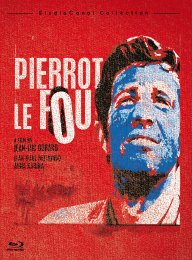

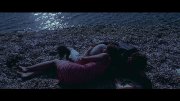
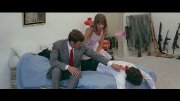
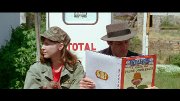
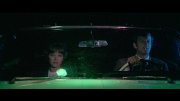
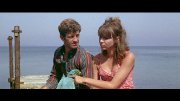
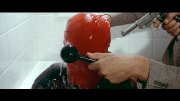
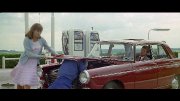
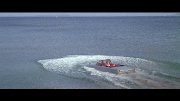
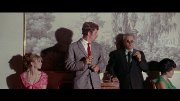




































Your Opinions and Comments
Be the first to post a comment!